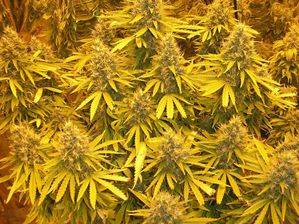Quazi
Member
Hello everyone. Quazi here with another guide to help you in your travels.
First, of course:

Let's get started!


 An Overview of Cannabis Training (ScrOG, SoG, FIM, Supercrop, LST, etc.)
An Overview of Cannabis Training (ScrOG, SoG, FIM, Supercrop, LST, etc.) 


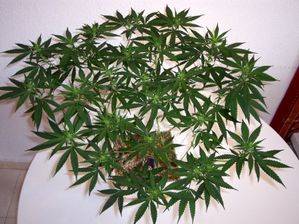
Now then. After the reactions that I received on my first dive into guides for training, I thought a more complete guide was necessary as it's something I've done quite a bit more reading into since then and I've also gained experience and insight into various methods. In addition, it seems the same questions are still being asked by newer growers. There are a lot of good sources of information out there on the subject. However, I felt a compilation giving a brief explanation of them, with some examples, would allow everyone to develop a common language here. In addition, it'll help those newer to the hobby, and the forums, so they can understand just what the hell people are saying.
This guide will be divided into five parts:
I) Understanding Training
II) High Stress Training Techniques
III) Low Stress Training Techniques
IV) Sea of Green (SoG)
V) References/Links
No better place to start than the beginning...
 Part I: Understanding Training
Part I: Understanding Training 
First, I should go over the acronyms just to get them straight so that we all know we're talking about the same things here:
-ScrOG - Screen Of Green
-SoG - Sea Of Green
-FIM - Fuck I Missed
-LST - Low Stress Training
-HST - High Stress Training
With that out of the way, let's go into a small explanation as to why these methods are used and what they can help you achieve with your plants. We'll start by dispelling a few of the most prevalent myths about training:
1) Training can take place during flower.
2) Training is not just to control the height of the plant.
3) Training can be done for any strain. Though some react better than others.
With those three things out of the way, let's get into some meat and potatoes.
Training can be divided into two main categories:
High Stress Training - HST
Low Stress Training - LST (also a common name for a method of training so be careful with this)
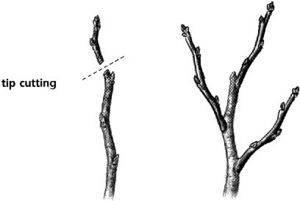
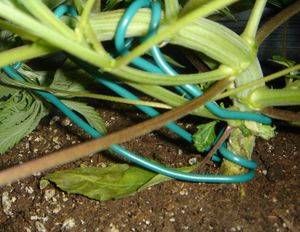
The two types of training are like they sound: either more or less stressful for the plant that you are training. For the purpose of this guide and according to most of the sources out there, the differentiation is simple:
LST = not physically damaging the plant
HST = physically damaging the plant
Notice that I did not say harming the plant because, well, it's training; none of us are out to hurt our plants.
Both of these types of training produce similar results, but they are done in different ways. Everyone who trains has their preferred method. To help you pick the method that you'd like to choose for your grow, I'll explore the pros and cons of each. We'll go into detail about the different types of training in the next parts of this guide.
High Stress Training
-Pros
Low Stress Training
-Pros
Training, when executed properly, has great results that can be seen in both quality and yield for your plants. It can be the difference between 2 big colas and some popcorn to 8-10 large colas:
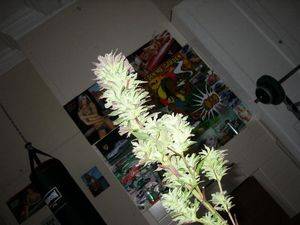
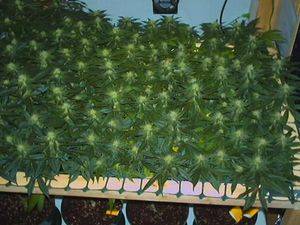
Training, whether it be HST or LST, is done for the same reason: to reduce the level of auxins in the tip of the plant. Cannabis is a plant that grows with a characteristic called "apical dominance." This means that, like other plants, it will do everything it can to push a single tip towards the source of light. We call the tip of a plant that grows like this the apical tip or the terminal tip. The tips of the cannabis plants are also where the biggest colas are produced due to their proximity to the source of light.
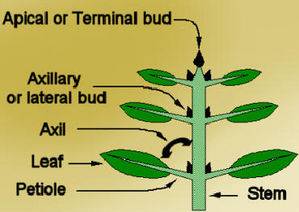
The tip of the plant is also where a particular type of auxin (plant horomone) is most prevalent. It's called indole-3-acetic-acid (IAA). Unfortunately, due to the chemical properties of IAA, you won't see it in the rooting horomones you can buy. More than likely, you'll find indole-3-butyric-acid (IBA) and/or a-Naphthalene acetic acid (NAA); other auxins.
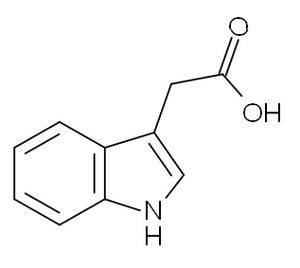
Now, the auxins promote growth when they are in certain levels but they can also inhibit, or stunt, the growth of certain aspects of the plants if they are at higher levels. This is the case for cannabis plants. The plant is perfectly happy pushing one bud up as far as it can to the source of light. The other buds, lower down the branch, will remain auxiliary buds and branching is not as likely to occur in these places. This is especially true in smaller, indoor environments. This is because the auxin production within the apical tip is very high, preventing the lower buds from growing out.
A very obvious example of this is in nature with the pine trees:
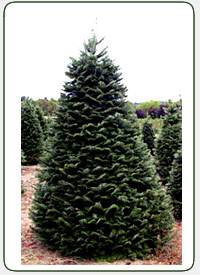
So, training, whether HST or LST, is done to accomplish one of two things:
1) Removing/inhibiting the main source of auxins
2) Making the plant think the apical tip is no longer the best source of light
By removing the main source of auxins, the lower (auxiliary) buds are no longer inhbited. The plant will now concentrate on the auxiliary buds and cause branching to occur in order to get itself a new apical tip. In ideal environments, the plant will grow somewhat symmetrically so that means you can very often more than double the number of growing tips.
By making the plant think it's apical tip is no longer the best source of light, it will send the message (via auxins and other chemicals) to the auxiliary buds lower down the stem that they need to grow up to get to the light. The tip is not removed, but new bud sites are formed further down the stem. Depending on the length of the stem and strain of the plant, you can sometimes get many, many bud-sites to grow this way.
In either case, you end up with more bud-sites closer to your light source than before and, most of the time, you'll end up with a more even, bushier canopy to ensure your lights are being utilized to their fullest.
Now that you've got an understanding of training, we can start to look at some examples.
Part II continues below...
First, of course:

Let's get started!


 An Overview of Cannabis Training (ScrOG, SoG, FIM, Supercrop, LST, etc.)
An Overview of Cannabis Training (ScrOG, SoG, FIM, Supercrop, LST, etc.) 


Now then. After the reactions that I received on my first dive into guides for training, I thought a more complete guide was necessary as it's something I've done quite a bit more reading into since then and I've also gained experience and insight into various methods. In addition, it seems the same questions are still being asked by newer growers. There are a lot of good sources of information out there on the subject. However, I felt a compilation giving a brief explanation of them, with some examples, would allow everyone to develop a common language here. In addition, it'll help those newer to the hobby, and the forums, so they can understand just what the hell people are saying.
This guide will be divided into five parts:
I) Understanding Training
II) High Stress Training Techniques
III) Low Stress Training Techniques
IV) Sea of Green (SoG)
V) References/Links
No better place to start than the beginning...
 Part I: Understanding Training
Part I: Understanding Training 
First, I should go over the acronyms just to get them straight so that we all know we're talking about the same things here:
-ScrOG - Screen Of Green
-SoG - Sea Of Green
-FIM - Fuck I Missed
-LST - Low Stress Training
-HST - High Stress Training
With that out of the way, let's go into a small explanation as to why these methods are used and what they can help you achieve with your plants. We'll start by dispelling a few of the most prevalent myths about training:
1) Training can take place during flower.
2) Training is not just to control the height of the plant.
3) Training can be done for any strain. Though some react better than others.
With those three things out of the way, let's get into some meat and potatoes.
Training can be divided into two main categories:
High Stress Training - HST
Low Stress Training - LST (also a common name for a method of training so be careful with this)

The two types of training are like they sound: either more or less stressful for the plant that you are training. For the purpose of this guide and according to most of the sources out there, the differentiation is simple:
LST = not physically damaging the plant
HST = physically damaging the plant
Notice that I did not say harming the plant because, well, it's training; none of us are out to hurt our plants.
Both of these types of training produce similar results, but they are done in different ways. Everyone who trains has their preferred method. To help you pick the method that you'd like to choose for your grow, I'll explore the pros and cons of each. We'll go into detail about the different types of training in the next parts of this guide.
High Stress Training
-Pros
- Quick
- Easy
- Requires no additional parts (except to cause damage)
- Great for larger grows
- Creating possible sites for infection
- Can backfire if the plant reacts poorly
- Mostly irreversible
- Mistakes are more costly
- Possibly slower recovery time
Low Stress Training
-Pros
- Does not stress plants as much
- Reversible (for the most part)
- Forgivable
- Great for micro grows
- Fun to do as it's more involved
- Requires additional parts
- Takes more time
- Possibly less fun to do as it's more involved (just depends on you)
- Requires more plant manhandling
Training, when executed properly, has great results that can be seen in both quality and yield for your plants. It can be the difference between 2 big colas and some popcorn to 8-10 large colas:


Training, whether it be HST or LST, is done for the same reason: to reduce the level of auxins in the tip of the plant. Cannabis is a plant that grows with a characteristic called "apical dominance." This means that, like other plants, it will do everything it can to push a single tip towards the source of light. We call the tip of a plant that grows like this the apical tip or the terminal tip. The tips of the cannabis plants are also where the biggest colas are produced due to their proximity to the source of light.

The tip of the plant is also where a particular type of auxin (plant horomone) is most prevalent. It's called indole-3-acetic-acid (IAA). Unfortunately, due to the chemical properties of IAA, you won't see it in the rooting horomones you can buy. More than likely, you'll find indole-3-butyric-acid (IBA) and/or a-Naphthalene acetic acid (NAA); other auxins.

Now, the auxins promote growth when they are in certain levels but they can also inhibit, or stunt, the growth of certain aspects of the plants if they are at higher levels. This is the case for cannabis plants. The plant is perfectly happy pushing one bud up as far as it can to the source of light. The other buds, lower down the branch, will remain auxiliary buds and branching is not as likely to occur in these places. This is especially true in smaller, indoor environments. This is because the auxin production within the apical tip is very high, preventing the lower buds from growing out.
A very obvious example of this is in nature with the pine trees:

So, training, whether HST or LST, is done to accomplish one of two things:
1) Removing/inhibiting the main source of auxins
2) Making the plant think the apical tip is no longer the best source of light
By removing the main source of auxins, the lower (auxiliary) buds are no longer inhbited. The plant will now concentrate on the auxiliary buds and cause branching to occur in order to get itself a new apical tip. In ideal environments, the plant will grow somewhat symmetrically so that means you can very often more than double the number of growing tips.
By making the plant think it's apical tip is no longer the best source of light, it will send the message (via auxins and other chemicals) to the auxiliary buds lower down the stem that they need to grow up to get to the light. The tip is not removed, but new bud sites are formed further down the stem. Depending on the length of the stem and strain of the plant, you can sometimes get many, many bud-sites to grow this way.
In either case, you end up with more bud-sites closer to your light source than before and, most of the time, you'll end up with a more even, bushier canopy to ensure your lights are being utilized to their fullest.
Now that you've got an understanding of training, we can start to look at some examples.
Part II continues below...
Last edited:

 Part II - High Stress Training
Part II - High Stress Training 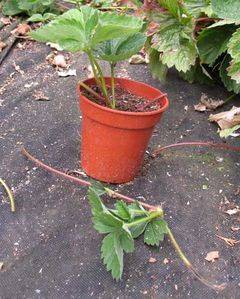
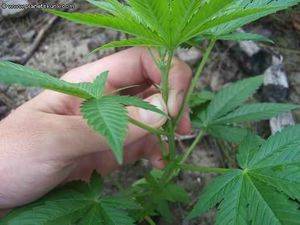
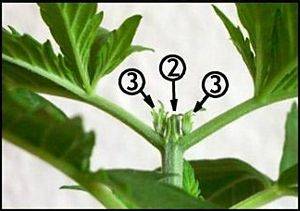
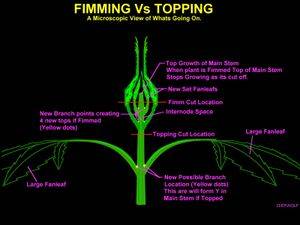
 Part III - Low Stress Training
Part III - Low Stress Training 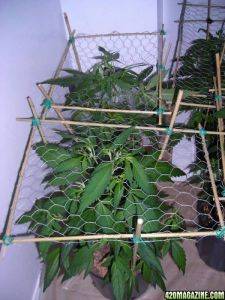
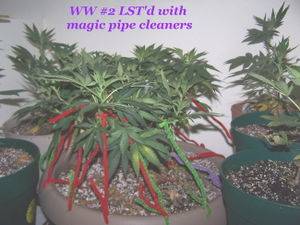
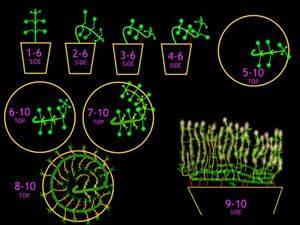
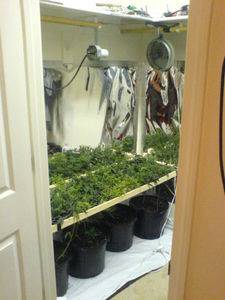

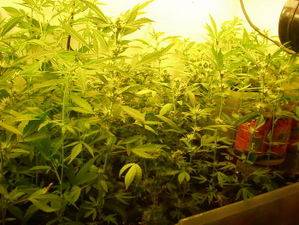
 Part V - References/Links
Part V - References/Links 